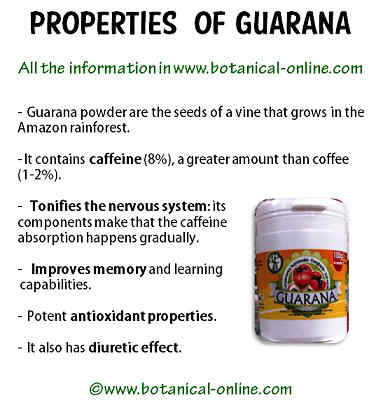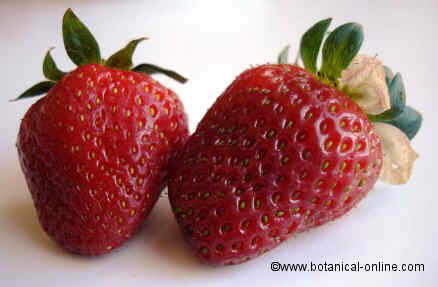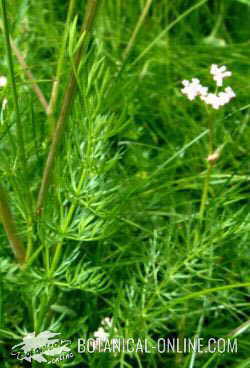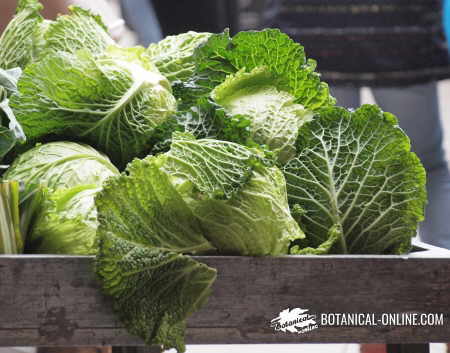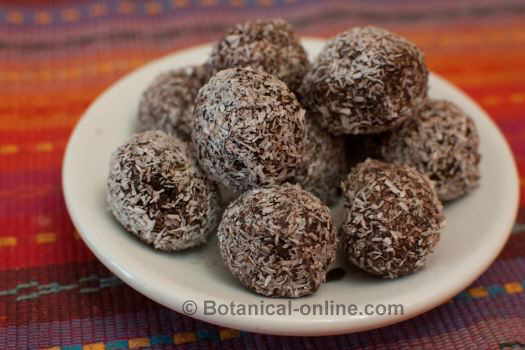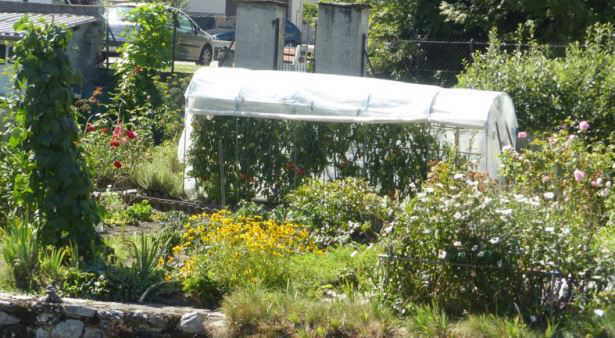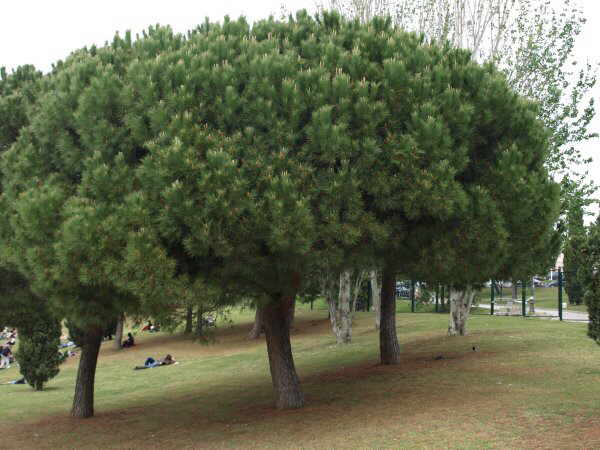Contents
- 1 Different ways of growing vegetables in a home garden
- 2 Types of vegetable gardens
- 3 The distribution of vegetables in the garden: cropping and rotations
Different ways of growing vegetables in a home garden
Importance of cultivating vegetables in the garden
Growing vegetables on a terrace, balcony or private garden is especially important in modern times because we can have a fresh natural food source at hand.
When we allocate a small plot within the garden to plant these plants, we will not have to take into account the profits but the benefits of owning foods with superior properties to those we can get in grocery stores or supermarkets, especially if we are dedicated to practice organic gardening.
We know that the properties of vegetables are progressively degraded after being harvested. Since they are collected by the grower to the moment they are sold in retail stores there has been a considerable time, in which much of the water and soluble vitamins have diminished (especially vitamin C and vitamin B)
Growing vegetables provides food with many properties in an immediate way. For example, Just go to your garden and collect a couple of tomatoes, some onions or lettuces a few moments before preparing your salad. You will see how wonderful they taste, comparing them from those you bought at the greengrocer.
Growing ornamental vegetables
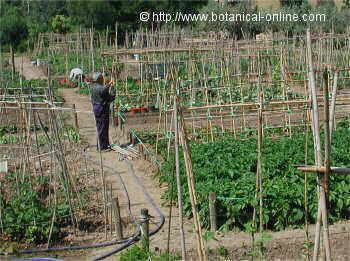
In addition, apart from the availability and the superior quality, cultivation of such plants can be used to achieve aesthetic effects in your garden. So, more often, gardeners grow flower plants combined with certain vegetables because they are very decorative.
Within this group we have some very notable examples: ornamental kale for its beautiful leaves, Swiss chard for its beautiful red stems or zucchini for the beautiful flowers it provides.
Types of vegetable gardens
We must distinguish the following types of gardens where vegetables can be grown:
- A traditional vegetable garden
- A vegetable garden in pots
- A mixed garden of ornamental plants and vegetables
Characteristics of a traditional vegetable garden
This is a type of garden in which the entire garden or just a garden plot is devoted to grow these type of plants. In this way, ornamental plants should be put apart from food plants. This is done to establish a much more productive way of food production or to cover most of the needs of a family.
Sometimes when a garden with lots of surface is available, this type of garden can be established, but more often many families only have a small area, so that its productive capacity does not cover the global needs of a family unit.
How big a traditional vegetable garden must be?
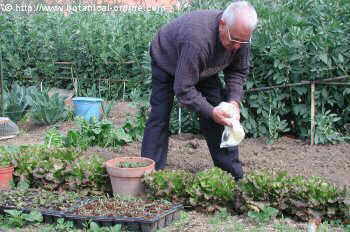
It is considered that an area of 100 m2 or, what is the same, a plot of 20 m x 5 m is sufficient to meet the daily food needs of a family of 5 members and a plot of about 30 or 40 m2 is sufficient to provide a lot of vegetables, as long as the cultivation techniques used to maximize the floor are applied and this can be kept fertile. To do this, as we shall see later, one must correctly apply the techniques of association and crop rotation.
Having an area of about 30 to 40 m2 square to grow vegetables is available to few families in big cities. Still, with a considerably smaller area can be reached to produce lots of vegetables.
In many European cities organic gardens are established for older people in public spaces. They are intended to cover part of the time these people have, and, at the same time, they encourage exercise, provide a space for relationships with others and are a cheaper source of obtaining food and natural fresh. (They are only allowed for organic farming)
After various studies, it was concluded that the ideal size of the plot which is offered to each of the persons was about 40 m2. So, considering the extension needed, many people in rural areas or residential ones will dispose of the needed soil to start the practice of gardening without any excuse.
What conditions does a traditional vegetable garden require?
- Size enough: As we have seen, at least 40 m2
- Plenty of sun and water: Before embarking on this type of cultivation, you have to know that you must dispose of an open plot, free of trees and high walls since vegetables need a sunny exposure. Also, a lot of irrigation is needed.
Characteristics of a vegetable gardening in pots
Unfortunately, especially in large cities, there are few people who have sufficient area to start in traditional vegetable gardening. In this case, it is possible to produce some vegetables on the terraces or balconies using pots or containers.
Obviously, this type of cultivation can not meet the needs of a family or even a person, but you can get some vegetables of superior quality and freshness, besides decorating your terrace or balcony. This will provide you with the satisfaction of seeing how your plants produce fruits as a result of your personal labor.
Advantages of gardening in pots
With regard to vegetables grown in the garden, growing in pots have the advantage of not needing so much care. Pots can be placed where more appropriate, for example, pots do not need to be weeded as often as when grown in the ground or in a container, they can be transported to a sunny place or in a sheltered one.
Characteristics of a mixed cultivation of ornamental plants and vegetables
In smaller gardens or where you want to divide the garden to create a piece exclusively for the cultivation of these plants, you can choose to create an ornamental plant garden mixed with some vegetables. In this case, choose those food plants whose combination with other herbs or flowers is more decorative.
For example, some varieties of beans, have very attractive flowers with colors that can be used to decorate a corner of the garden and, at the same time, to provide food. Among these we have the runner bean (Phaseolus coccineus) from Mexico, a climbing species that can reach 3 feet tall and whose beans can reach 15 cm in length, but the large scarlet flowers stand out from a decorative point of view.
The distribution of vegetables in the garden: cropping and rotations
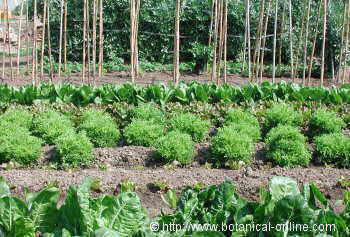
Distributing the vegetables properly will allow a more efficient use of land available and will allow two concepts that are necessary for growing vegetables properly: the association of crops and rotations.
Advantages of intercropping in the home garden
Faced to intensive crops, representing a single culture or monoculture, growing vegetables in a home garden can associate different types of plants, that’s to say planting different species together, something that is called intercropping.
The intensive cultivation may have economic advantages for large productions but intercropping has many advantages in the orchard garden.
Among all the advantages we can mention a greater use of ground, improving of soils, reducing of weeds, etc. (More information on intercropping)
Advantages of crop rotation in a home garden
Crop rotation means that the vegetables should not stand forever in the same places. It has been shown that if they are planted in the same place, this usually promotes the emergence of diseases.
For example, if vegetables from the cabbage family are planted in the same place one crop after another, after a little time, they develop abundant pests that affect these plants. On the contrary, if these crops are alternated with other plants such as peas, spinach or carrots, these diseases are much more controlled and it is not necessary to use pesticides. (More information on crop rotation)
When to sow, plant or pick up vegetables in a home garden?
To plant vegetables there is a right time. The same can be said of collecting them. The “Cultivation calendars give the gardener the ideal time for planting and collecting any type of food, as well as other interesting data.
![]() More information on growing vegetables
More information on growing vegetables

